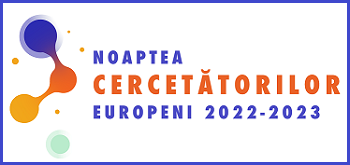| Conţinutul numărului revistei |
| Articolul precedent |
| Articolul urmator |
 |
 398 398 25 25 |
| Ultima descărcare din IBN: 2024-02-06 22:39 |
| Căutarea după subiecte similare conform CZU |
| 613.956+612.662(540) (1) |
| Health and hygiene in relation to age, sex, ethnicity (72) |
| Physiology. Human and comparative physiology (725) |
 SM ISO690:2012 SM ISO690:2012SUBRAMANI, Hema Priya, KARUPPUSAMY, Sivakumar, PALANISAMY KANDASAMY, MohanRaaj, CHOUDHARY, Arbind Kumar, MANIKKOTH RAMAPURATH, Ramya, NATARAJAN, Nishanthini. A study of menstrual hygiene practices and associated environmental & social factors among adolescent girls in rural Puducherry. In: One Health and Risk Management, 2023, nr. 4(1), pp. 51-58. ISSN 2587-3458. DOI: https://doi.org/10.38045/ohrm.2023.1.06 |
| EXPORT metadate: Google Scholar Crossref CERIF DataCite Dublin Core |
 One Health and Risk Management One Health and Risk Management |
||
| Numărul 4(1) / 2023 / ISSN 2587-3458 /ISSNe 2587-3466 | ||
|
||
| DOI:https://doi.org/10.38045/ohrm.2023.1.06 | ||
| CZU: 613.956+612.662(540) | ||
| Pag. 51-58 | ||
| Rezumat | ||
Introduction. Adolescent females were prevented from receiving the appropriate knowledge due to social restrictions and traditional beliefs, which in turn led to poor hygiene habits. Material and methods. A community-based descriptive cross-sectional study employing a semi-structured questionnaire was carried out in the rural field practice region of MGMCRI, Puducherry, between the 15th of March 2019 and the 31st of April 2021. The study was done in Puducherry. The comprehensive enumeration yielded a total of 528 countable teenage females. Results. The vast majority of the teenage females (89.2%) reported using sanitary pads, whereas just 6.6% and 4.2%, respectively, reported using fresh or reused towels. 65.3% of the girls changed their wet absorbent between two and five times during the day. The vast majority of the girls, or 60.8% of them, disposed of their spent absorbent by either burying it or burning it. 67.9% of the girls were cleansing their genitalia when they were urinating. 54.4% of people cleaned their hands using soap and water, whereas 1.4% utilized ash soil, muddy dirt, or other types of soil. There was a statistically significant correlation between the style of housing and the availability of sanitary latrines (p<0.005) in relation to menstrual hygiene behaviors. Conclusions. This research also highlighted the absence of sanitary toilet facilities in the majority of residences, which negatively impacted the girls' ability to maintain their privacy and led to bad practices around menstruation hygiene. |
||
| Cuvinte-cheie adolescent girls, menstrual health and hygiene, sanitary pads, genito-urinary illness, adolescente, sănătate, igienă menstruală, absorbante igienice, boli genito-urinare |
||
|












